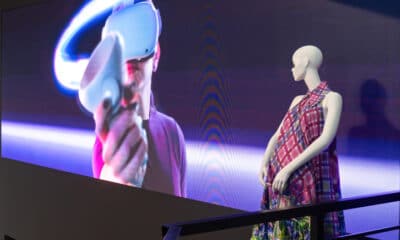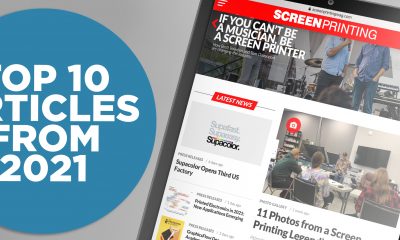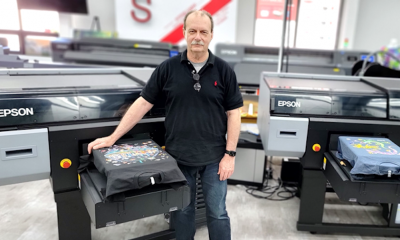Articles
Published
14 years agoon
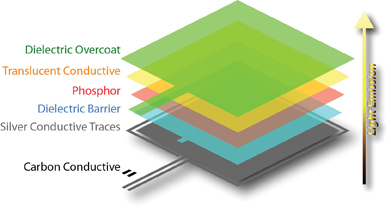
If you print garments like most shops do, then you pull the squeegee from the back of the screen to the front to pass the ink properly from the stencil to the surface of the shirt. This method is widely accepted and is even a design consideration built into automatic garment presses on the market today. The truth is a majority of printers rely on this technique because it’s what they were taught or it’s the way they’ve always done it.
If you print garments like most shops do, then you pull the squeegee from the back of the screen to the front to pass the ink properly from the stencil to the surface of the shirt. This method is widely accepted and is even a design consideration built into automatic garment presses on the market today. The truth is a majority of printers rely on this technique because it’s what they were taught or it’s the way they’ve always done it.
However, radical thinking is required in screen printing to try a new concept or put a new twist on a trusted process to introduce a method that will enhance the old one and still preserve some time-honored traditions. The process I’m referring to is pushing vs. pulling the squeegee in manual screen printing.
Pushing the squeegee, as opposed to exerting a pulling motion on it, does not solve all of the problems associated with manual screen printing. It does, however, bring some advantages to large printing runs and can enhance the printability of a garment graphic.
Squeegee deflection
The first aspect I address is the deflection of the squeegee. When pulled, the squeegee blade is prone to deflect in the direction of the force applied to the blade. Those who favor solving their printing problems by increasing squeegee pressure make the squeegee blade even more apt to deflect in the direction of the force they’re applying to it.
The squeegee can only support itself from the standpoint of the durometer and height of the blade. Excessive pressure exerts downward force that, in turn, causes blade deflection and puts the face of the blade in contact with the screen. However, when the squeegee is pushed, the force on the squeegee is distributed in such a way that the height of the blade supports itself in the direction of the stroke. The advantages are astounding.
First, the squeegee’s ability to support itself in the direction of the print stroke minimizes the blade’s ability to roll over and, as a result, keeps the edge of the blade in contact with the surface of the screen. This allows for enhanced detail without the threat of a blade rolling over and smearing the design. Additionally, the possibility of squeegee drag pulling on a low-tension screen and creating shadowing decreases.
Pushing the squeegee keeps its edge in absolute contact with the screen’s surface. As a result, the squeegee’s self-supported edge exerts a greater amount of shear on the ink while in motion.
Ergonomics
Fatigue is a constant battle for manual screen printers. The nature of the process involves the extension of arms and application of pressure to pull the squeegee across the screen. The process requires the use of arm muscles and is quite tiring. Printers have to exert pressure in a downward motion while their arms are extended and at their weakest point. This cycle rapidly takes its toll on the printer and decreases productivity as the day wears on.
The benefit associated with applying pressure to the squeegee by pushing is quite simple: When you push the squeegee across the screen, as opposed to pulling, you apply force with your upper body and shoulders instead of relying solely on your arms. The result? Your arms don’t tire as rapidly, and you can maintain a greater rate of productivity for a longer stretch of time. The force you apply comes from the palms of your hands, which means a dramatic reduction in finger fatigue.
Trying this different approach to manual printing will be the greatest challenge for most shops. Change is the most feared and dreaded part of any application or situation. The most awkward part of this process is acquiring a feel for applying the squeegee in an entirely new manner. For example, the larger the image area, the greater the amount of drag that occurs on the squeegee blade’s surface. Printing white plastisol through a coarse mesh can be tricky until you get used to the feel it.
The good news is that, like any screen-printing process, your skills will improve with practice. Once you get used to executing your print strokes by pushing the squeegee, you will realize all of the benefits detailed above.
Rick Davis
Rick Davis is the president of Synergy Screen Printing in Orlando, FL. A 27-year veteran of the textile-printing industry, Davis is a member of the Academy of Screen Printing Technology and has a background that spans production management, artwork engineering, application testing, and industry consulting. He is a frequent contributor to trade publications and a speaker at industry trade events.
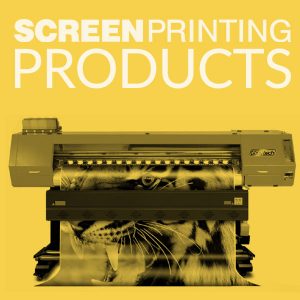
Subscribe

Magazine
Get the most important news
and business ideas from Screenprinting Magazine.
Most Popular
-

 Case Studies2 months ago
Case Studies2 months agoHigh-Density Inks Help Specialty Printing Take Center Stage
-

 Art, Ad, or Alchemy2 months ago
Art, Ad, or Alchemy2 months agoF&I Printing Is Everywhere!
-
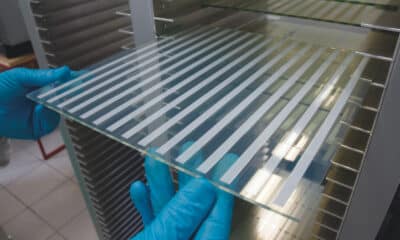
 Andy MacDougall2 months ago
Andy MacDougall2 months agoFunctional and Industrial Printing is EVERYWHERE!
-

 Columns3 weeks ago
Columns3 weeks ago8 Marketing Mistakes Not to Make When Promoting Your Screen Printing Services Online
-

 Editor's Note2 weeks ago
Editor's Note2 weeks agoLivin’ the High Life
-

 Marshall Atkinson2 weeks ago
Marshall Atkinson2 weeks agoHow to Create a Winning Culture in Your Screen-Printing Business
-

 Thomas Trimingham2 months ago
Thomas Trimingham2 months ago“Magic” Marketing for Screen Printing Shops
-

 News & Trends2 months ago
News & Trends2 months agoWhat Are ZALPHAS and How Can You Serve Them in Your Print Business?

